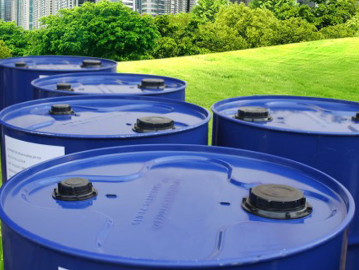
Enhancing the durability and stability of various materials is a crucial aspect of many industries, including manufacturing, construction, and automotive. One effective method for achieving enhanced durability and stability is through the use of amine curing agents. In this deep dive, we will explore how amine curing agents work, their applications, and the benefits they provide.
Amine curing agents are widely used in the production of polymers, coatings, adhesives, and composites. They are chemical compounds that react with other substances, such as epoxy resins, to complete the curing process. The amine groups in these curing agents react with the epoxy groups present in the resin, resulting in cross-linking and the formation of a highly durable, stable, and strong material.
One of the primary advantages of using amine curing agents is their ability to significantly improve a material's mechanical properties. The cross-linking reaction between the amine curing agents and epoxy resins creates a three-dimensional network structure, increasing the material's strength, hardness, and resistance to external forces. This enhanced durability makes amine-cured materials suitable for applications that require high mechanical performance, such as structural components in aerospace and marine industries.
Furthermore, amine curing agents offer excellent chemical resistance. The cross-linked structure they form provides a barrier against chemical attack, protecting the material from corrosive substances, solvents, and harsh environments. This attribute makes amine-cured materials suitable for applications where chemical resistance is essential, such as industrial floorings, chemical storage tanks, and protective coatings.
In addition to mechanical and chemical properties, amine curing agents also contribute to thermal stability. The cross-linking reaction improves the material's ability to withstand elevated temperatures without degrading or losing its structural integrity. This characteristic makes amine-cured materials suitable for high-temperature applications, including aerospace components, electrical insulation, and automotive parts.
Another key advantage of amine curing agents is their versatility in formulation. They can be tailored to meet specific requirements by adjusting the type and concentration of amines used. This flexibility allows manufacturers to optimize the material's properties depending on the intended application. For example, by using different amine curing agents, it is possible to achieve materials with varying levels of flexibility, impact resistance, or curing speed.
It is worth mentioning that the curing process of amine-cured materials can be sensitive to environmental conditions, such as temperature and humidity. Therefore, proper curing conditions and control measures are necessary during the manufacturing process to ensure optimal cross-linking and material performance.
In conclusion, amine curing agents play a vital role in enhancing the durability and stability of materials in various industries. Their ability to improve mechanical properties, chemical resistance, thermal stability, and formulation versatility makes them a preferred choice for many applications. By understanding the deep impact of amine curing agents, manufacturers can develop materials that meet the ever-increasing demands for durability and stability in today's industries.